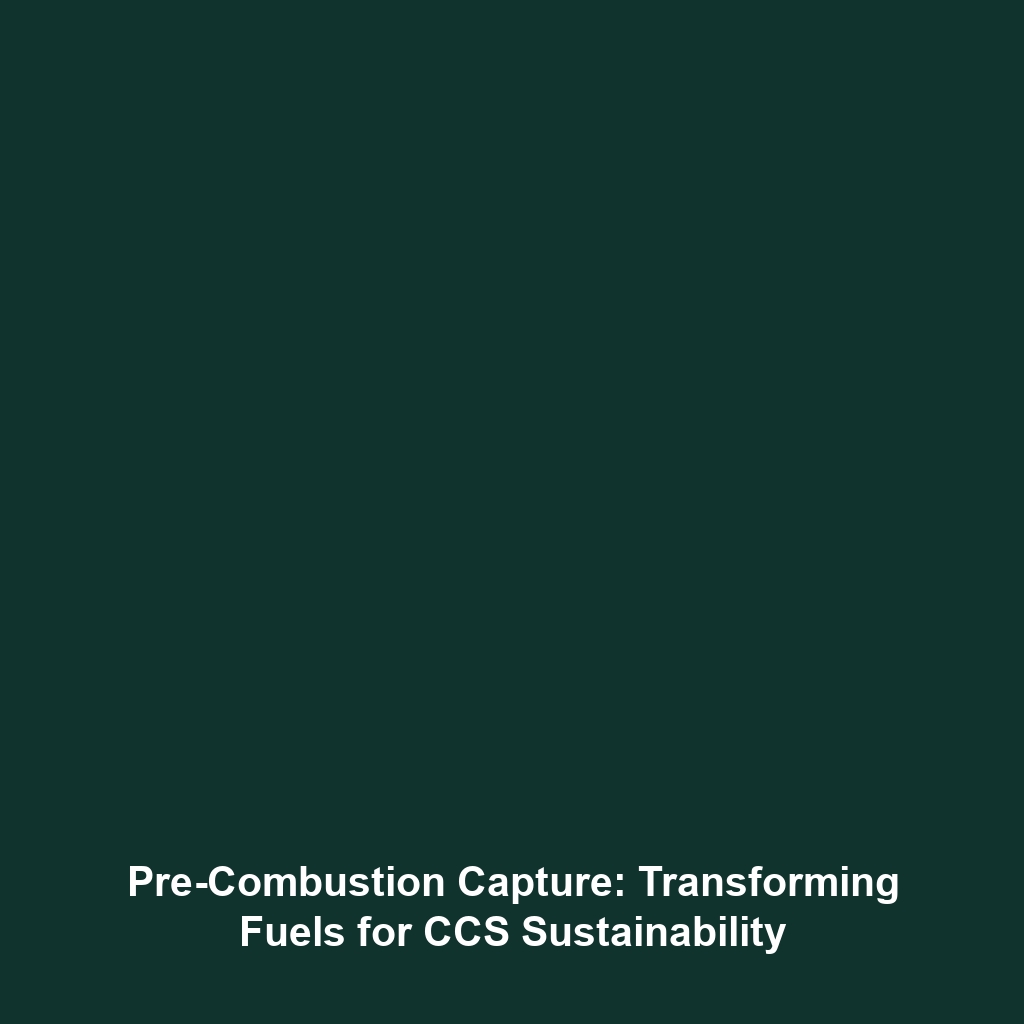Technological Advancements: Cutting-edge Research and Innovations in Carbon Capture & Storage (CCS)
Introduction
Technological advancements in Carbon Capture & Storage (CCS) are at the forefront of combating climate change and reducing greenhouse gas emissions. As the world grapples with increasing carbon levels, innovative research in CCS technologies plays a critical role in sustainable energy transitions and climate mitigation strategies. This article delves into the latest breakthroughs and cutting-edge innovations within the realm of CCS, highlighting their significance and potential impact on the environment.
Key Concepts
Understanding the principles of Carbon Capture & Storage (CCS) is essential for appreciating the recent technological advancements in this field. Key concepts include:
- Carbon Capture: The process of capturing carbon dioxide emissions from sources like power plants and industrial processes before they enter the atmosphere.
- Carbon Storage: Safe and secure storage of captured carbon dioxide, often in geological formations deep underground.
- Carbon Utilization: Innovative methods to convert captured carbon dioxide into useful products such as fuels, chemicals, or materials.
These concepts provide a foundation for understanding how advancements in technology enhance CCS capabilities, leading to more efficient carbon management solutions.
Applications and Real-World Uses
Technological advancements in CCS have facilitated numerous real-world applications, including:
- Power Generation: CCS technologies are being integrated into coal and gas-fired power plants to reduce carbon emissions significantly.
- Cement and Steel Industries: Major industrial sectors are adopting CCS to curb emissions, showcasing the versatility of these innovations.
- Bioenergy with CCS (BECCS): This approach captures carbon dioxide emitted from biomass energy production, effectively creating negative emissions.
These examples highlight how technological advancements in CCS are shaping a more sustainable future.
Current Challenges
Despite promising advancements, challenges remain in the field of Carbon Capture & Storage (CCS). These include:
- High Costs: The financial investment required for CCS technologies can be prohibitive for widespread implementation.
- Public Acceptance: Concerns regarding safety and environmental impact can deter public support for CCS projects.
- Regulatory Framework: Inconsistent policies and regulations may hinder development and deployment of CCS solutions.
Future Research and Innovations
The future of Carbon Capture & Storage (CCS) is promising, with several upcoming innovations on the horizon:
- Direct Air Capture (DAC): New technologies aiming to remove CO2 directly from the atmosphere.
- Advanced Materials: Research into sorbents and membranes that enhance carbon capture efficiency.
- Integrated Solutions: Combining CCS with renewable energy sources to create a more sustainable carbon management ecosystem.
As research progresses, these innovations are expected to revolutionize the effectiveness and application of CCS technologies.
Conclusion
Technological advancements in Carbon Capture & Storage (CCS) represent a pivotal strategy in addressing climate change, achieving sustainable development, and reducing global carbon footprints. By understanding and implementing these cutting-edge innovations, societies can move toward a greener future. For further reading, consider exploring our related articles on renewable energy technologies and emissions reduction strategies to enhance your knowledge on this critical issue.



